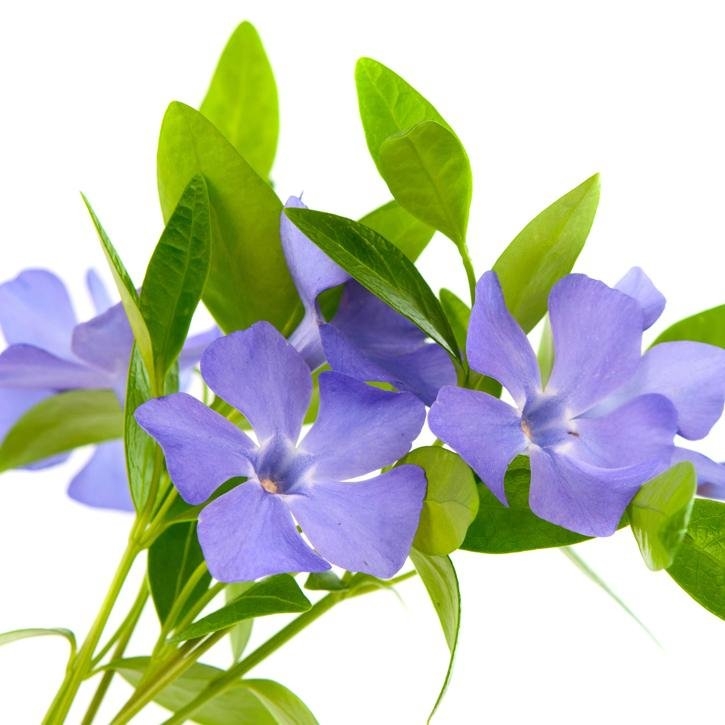Its name comes from the Latin word vincire which means to tie, to bind and from pervincire which emphasizes this idea. So vincapervinca means to bind with insistence, due to the tendency of its branches to arch being able to take root, when they touch the ground, with one of its knots constituting a thick ligature at ground level.
Composition and properties
The leaves of this plant are used.
There are numerous active principles among which we highlight: indole alkaloids (vincamine, vincaleucoblastine and its bases: vincamirine, isovincamine, perivincine, reserpine, majdine, akuamycin, estrictosodine, lactama, etc). Its content in vincamine gives it properties such as a good coronary and cerebral vasodilator, improving oxygenation and blood supply to the heart and brain, hypotensive, capillary protector (its action is superior to that of rutoside), antihemorrhagic, antidiabetic (stimulates pancreatic function by reducing blood sugar levels). These alkaloids also provide gonadotropic action (stimulating follicular function), analgesic and antispasmodic (the latter is due to its sympatholytic and parasympatholytic effect). It also decreases milk secretion.
It also possesses organic acids (protocatechuic, caffeic, P-hydroxybenzoyl), ursolic acid is abundant (pentacyclic triterpene), phenolic heterosides, especially vincoside (β-glucoside of dihydroxy 2-3 benzoic acid). The latter is very abundant in the young leaves and especially in the subway parts. It also has tannins, flavone pigments, choline and a bitter glycoside.
In external use it is vulnerary, antidermatotic, astringent and healing.
It is used in elderly people with irrigation problems, memory impairment, vertigo, tinnitus, difficulty in concentration, coronary insufficiency, arteriosclerosis, capillary fragility, digestive spasms, etc.
At high doses it can produce nausea, vomiting, pruritus. Do not give to pregnant women or in case of brain tumors.
